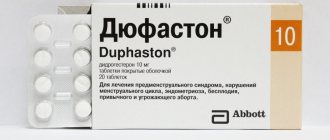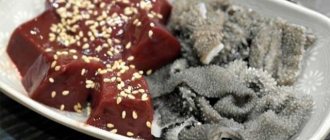One of the most exciting issues in the topic of healthy eating is the consumption of meat products. And, probably, the most common question arises about the internal organs of animals that are used as food. The liver especially stands out. “Is liver a healthy food?” We will look for the answer to this question in our article, relying only on scientific and proven facts.
Organic meats, including liver, are considered one of the most powerful superfoods. But why exactly is liver good for consumption? Liver—including beef liver, chicken liver, and cod liver—contains incredible amounts of essential nutrients. This usually surprises people since the animal's organs, including the liver, spleen, brain and kidneys, are usually discarded and not used in favor of muscle meat.
When we typically think of superfoods, we think of beautiful green leafy vegetables, colorful berries, cocoa, green tea or other plant foods. However, some animal products are also very valuable due to their rich content of nutrients, especially internal organs or offal. It is due to the extremely large amount of useful substances that offal has been consumed for centuries by generations of people in many cultures around the world.
Liver - benefits and harms for the health of men and women
The liver especially stands out among other offal products. It is believed that every gram of liver is beneficial and very valuable for health. And even though you may never have thought that liver could be as beneficial as fruits and vegetables, rest assured that liver is one of the most nutritious and dense foods on the planet, loaded with vitamin A, iron, and B vitamins. B (especially B12) and many others.
So, the answer to this question “Is liver a healthy food?” unequivocal - YES. As many studies have proven, consuming liver helps prevent anemia, supports good fertility in both men and women, promotes detoxification of the body, and much more.
Nutritional value of liver
The livers of different animals will provide different levels of micronutrients. For example, chicken liver contains the following substances per 30 grams. finished product:
Calories : 49 kcal Protein : 7 g. Fat : 2 gr. Vitamin B12 : 6 mcg (79%) Vitamin A : 4,076 IU (75%) Folate : 162 mcg (40%) Vitamin B2/riboflavin : 0.6 mg (33%) Selenium : 23 mg (33%) Vitamin B5 /pantothenic acid : 1.9 mg (19%) Iron : 3.6 mg (18%) Vitamin B3/niacin: 3.9 mg (15%) Vitamin B6 : 0.2 mg (11%) Phosphorus : 125 mg (eleven%)
Fats in the liver
If you are wondering whether liver fat is harmful, then you have nothing to worry about. Liver in general does not contain much fat compared to other animal products such as beef, butter, poultry or full-fat dairy products. One ounce (30 grams) of liver contains about 2 grams of fat.
This doesn't mean that fat from quality animal products is bad for you. Getting saturated fat from animal products, particularly liver, can be very beneficial for your health. For example, healthy fats help with neurological function, hormone production, and reproductive health. In some animal studies, the addition of chicken liver to the diet of rats has been shown to help alleviate oxidative stress and improve the serum lipid profile, despite the fact that it was a high-fat diet ().
Health Benefits of Liver
The liver is an internal organ found in the abdominal cavity of both humans and many animals, especially all vertebrates. Beef (veal) liver, chicken liver and cod liver are the most common types of liver in many countries. Throughout history, people around the world have valued the benefits of organ meats such as liver for helping combat infertility and improve fertility rates, growth and development, maintaining high levels of energy and vitality, and mental health.
Is liver really good for you and how nutritious is it? This organ meat is not only high in iron and vitamin A, but is also one of the best sources of many B vitamins, phosphorus and magnesium. Liver is the leader among all foods in terms of vitamin B12 content. If you compare the overall nutrient density of liver to other healthy foods such as spinach, carrots or apples, liver beats them all when it comes to how many vitamins and minerals there are per calorie.
However, the key to reaping all of these liver benefits is to consume liver from a healthy animal. It is not recommended to eat any offal obtained from animals that were sick or old, poorly cared for or improperly fed. So, let's focus on the main thing. Let's highlight 9 main beneficial properties of the liver for human health.
Alcoholic liver disease
Already from the name itself the cause of this disease becomes clear. It occurs in three stages: first, fatty degeneration of the liver occurs, after which toxic (in this case, alcoholic) hepatitis forms, and ultimately cirrhosis of the liver. Actually, nothing prevents them from developing simultaneously.
Laboratory diagnostics
Fibrotest / Actitest and Fibromax is a set of studies that allows you to assess the degree of fibrosis and degenerative-inflammatory changes at all stages of liver diseases. These are computational studies designed to determine the extent of tissue damage in common liver diseases.
Types of liver that can be eaten
Liver from different animals was thought to have slightly different properties, although for the most part liver from different animals provides the same nutritional benefits. Below are the different types of edible liver you can find in grocery stores, farmers' markets, specialty butcher shops, or even online:
Chicken liver
Chicken liver has the mildest taste, so it is a good choice for those who have just begun to “get acquainted” with offal. This is a type of liver that is often used to make pates and other dishes served in restaurants or prepared at home. Chicken liver has more fat, folate and iron than beef liver.
Beef and veal liver
Compared to chicken liver, beef liver contains slightly more calories, vitamin B12, vitamin B6, vitamin A, zinc and phosphorus. Many people believe that beef liver is not very tasty and appetizing compared to chicken liver, however, this is a matter of taste. You can find beef liver at some farmers' markets. And, if possible, choose calf liver, as this reduces the likelihood that you will get offal containing the hormones and antibiotics that are given to adult cows.
Fish liver (eg cod liver)
Excellent source of omega-3 fatty acids, vitamin A and vitamin D.
You can also try sheep liver, goat liver, duck liver or goose liver. For the best selection, check with your local butcher or farmer's market, who can advise you on the best liver to choose.
It is not recommended to consume pork liver due to the fact that pork by-products are often made from unhealthy animals, although pig meat or pork is a fairly healthy product. Unfortunately, pigs are typically raised in factory conditions and treated with hormones or other chemicals.
What to do if you notice changes in your skin?
Step 1. Consult your doctor and get an individual examination plan - biochemical tests - ALT, AST, bilirubin, alkaline phosphatase, GGTP, markers of viral hepatitis, immunological tests, ultrasound, and others, according to the doctor’s recommendations. Step 2. Find out the test results, diagnosis and prognosis of the disease. Step 3: Obtain a treatment plan that takes into account comorbidities.
Don't wait until your skin condition gets worse. Check your liver. In the early stages, recovery can be achieved. And the specialists of the EXPERT Polyclinic - hepatologists and dermatologists with extensive experience - will be happy to help. Health and beauty to your skin!
How often can you eat liver?
Most experts recommend eating liver or other meats one to three times a week. You don't necessarily have to eat large amounts of this product to get all its health benefits. Even small portions of liver, about 30 to 120 grams several times a week, will provide you with a significant supply of nutrients. Doctors usually recommend consuming 100 to 200 grams of liver per week.
When you buy liver, whether at a farmer's market or in supplement form, it is important that you get it from healthy animals. Calf liver and chicken liver are two of the best options to eat. If you can't find liver at the grocery store, look at farmers' markets. There is a good chance that someone will be able to sell you good quality organ meats, including liver.
Can liver be taken as a dietary supplement?
For those who don't want to risk eating beef or chicken liver from the grocery store, there is a great option to use a quality liver supplement instead.
These supplements are usually sold in powder or tablet form in health food stores or online. A high-quality liver supplement in its purest, most natural form, it basically works as a B-complex multivitamin, in tablet form. This would be a great solution for those struggling with anemia, low energy and vitality, fatigue, thyroid problems, autoimmune disease, poor cellular function and even cancer.
However, it is still recommended to eat real liver if you tolerate organ meats well.
Hemochromatosis
A disease accompanied by excessive accumulation of iron in the body.
Laboratory diagnostics
- Iron;
- Program 175 “Determine the cause of anemia” transferrin;
- Ferritin;
- Transferrin saturation (iron, transferrin, transferrin saturation);
- Iron binding capacity of serum.
Some historical facts about liver consumption
According to the Weston A. Price Foundation, “Virtually every cuisine in the world has liver dishes. In some cultures, liver is so highly valued that even human hands are forbidden to touch it... For most of recorded time, people preferred liver to muscle meat, considering it a source of great strength and magical healing abilities" ().
In his book Nutrition and Degenerative Diseases, Dr. Price traveled the world to study traditional diets in 14 different populations. He found that almost every group included meat in their diet in one form or another, as it helped them avoid disease and reproduce successfully.
In Traditional Chinese Medicine, liver has long been considered a nutritional energy source. It is believed that eating meat products helps replenish depleted nutrient reserves and support the functions of internal organs (). For many centuries, liver was consumed by hunter-gatherers, such as those living in parts of Africa, who hunted primarily animals such as elk and deer. Liver was a valuable source of protein and nutrients when food was scarce, including in colder climates when plant foods were difficult to grow.
In medieval Europe, liver was a popular ingredient, used as a filling for pastries, sausages, and even meat puddings. In Asia, liver has a long history of use in broths and stews. In Japan, liver has always been considered an important food for pregnant women. Today, liver is still frequently consumed in France, Argentina, India, Spain, Russia, parts of Scandinavia and parts of the Middle East. For example, liver and onions are still a popular dish in Latin America, such as Spain and Portugal.
Potential Liver Health Harm
Liver is a very healthy food for most people. However, there are both pros and cons of consuming liver that you need to be aware of.
- If you have high levels of iron or copper in your blood, you may need to limit your intake of liver and other meat products.
- If you are taking high doses of vitamin A in supplement form, be careful about consuming liver as it could potentially raise your vitamin A levels to excessively high amounts. Very high intakes of vitamin A can potentially be toxic and harmful and should be avoided, especially during pregnancy or childhood.
- When it comes to eating raw liver, do so only if you are confident that the product is fresh and comes from a healthy animal that has been raised in good conditions. Health authorities in many countries advise against eating raw liver due to the risk of bacterial contamination, although documented evidence suggests the risk is lower if you buy fresh, quality organ meats (). Freezing and cooking the liver helps reduce the risk of bacterial infection.
Liver is generally safe for children starting around 8-9 months. Keep in mind that only a small portion of organ meats is required for children, and more is not always better.
Fatty degeneration or steatosis of the liver (fatty hepatosis)
Chronic liver disease characterized by excessive accumulation of fat. The following can contribute to the development of fatty hepatosis:
- alcohol;
- overweight;
- medications (some antibiotics, hormonal drugs, cytostatics (for the treatment of rheumatic diseases or chemotherapy), amiodarone, warfarin);
- industrial or natural (fungal toxins) poisons;
- concomitant diseases: diabetes mellitus and other hormonal disorders, infections (viral hepatitis C), congenital metabolic disorders, diseases of the gastrointestinal tract (impaired absorption processes in the intestine, celiac disease, ulcerative colitis, Crohn's disease, pancreatic diseases or previous surgical interventions .
Laboratory diagnostics:
- General detailed blood test (automatic hemoanalyzer 33 indicators);
- Program 114 “liver tests” includes the following indicators: total bilirubin, direct and indirect bilirubin, alanine aminotransferase (ALT), aspartate aminotransferase (AST), thymol test, total protein, albumin, alkaline phosphatase, gamma-glutamine transpeptidase (GGTP).










